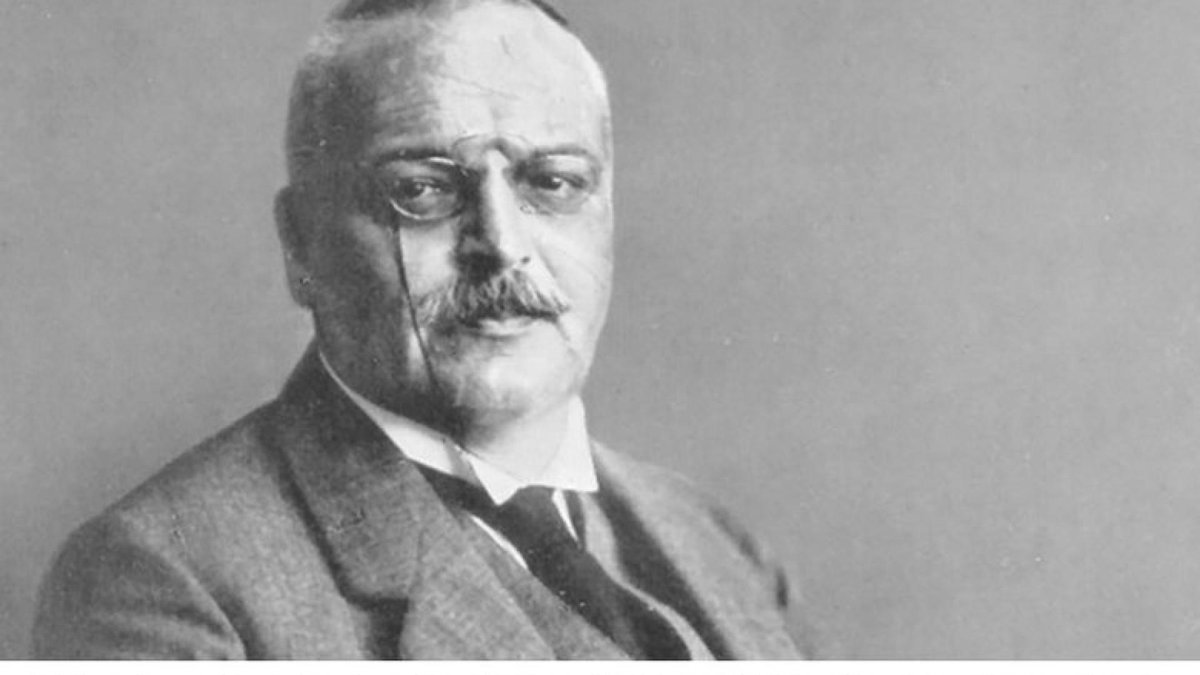
Learn about Alois Alzheimer, the physician who described the brain changes linked with dementia, and the many other contributions that this gifted clinician and researcher made to our knowledge of medicine.
Today we cannot hear the name of Alzheimer without thinking immediately of a disease that brings tragedy into the lives of millions around the world. On June 14th of each year, we celebrate the birthday of the man behind this disease’s name. Alois Alzheimer, a psychiatrist who lived from 1864 to 1915, deserves to be remembered and honored for his contributions to our understanding of the disease that later was named after him. Describing the brain changes linked with this dementia, however, was only one of the many contributions that this gifted clinician/researcher made to our medical knowledge.
A Gifted Young Man
Alois was born in a small village in Bavaria. His father, the first notary to work at the royal provincial law court in Low Franconia, valued learning very highly. He sent Alois to a well-regarded secondary school in Aschaffenburg so that this gifted young man could acquire a superior education. Alois excelled in science and undertook the study of medicine at the Royal Friedrich Wilhelm University in Berlin at a time when scientists were deepening their understanding of the effects of various diseases on the body’s cells. Alzheimer was also exposed to the evolving view of psychotic symptoms as a reflection of brain disease. Even as a medical student, Alzheimer showed his keen powers of observation and description in his graduation thesis, a study of the glands that produce earwax.
A Progressive Approach to Treatment
Alzheimer’s education had taught him the value of the microscope in exploring the causes and effects of disease. He wondered whether the same tool might be used in furthering our understanding of psychiatric disorders. After medical school, Alzheimer was able to follow up on this idea at the Hospital for the Mentally ill and Epileptics in Frankfurt on Main, where he was employed as a resident and subsequently as a senior physician. He then worked at the Asylum in Frankfurt, becoming its director in 1895. One of his colleagues there, Franz Nissl, had developed special chemical stains for revealing structures within the brain’s cells. Alzheimer and Nissl carried out an important series of brain cell studies together. The clinical treatment approach at this institute was progressive, with a focus on medical treatments and avoidance of isolation as a treatment.
Brain Research
Alzheimer had married in 1894 and with his wife Cecilie, a banker’s widow, he raised three children. After the tragically early death of his wife in 1901, Alzheimer moved to Heidelberg to join Emil Kraepelin in 1902. Subsequently, he followed Kraepelin to Munich in 1904. Kraepelin was the most influential psychiatrist of his era, and the psychiatric clinic led by Kraepelin and Alzheimer was known for its modern and humane treatment. Alzheimer continued his research in Munich, publishing his observations on the brains of a large series of syphilitic patients in 1904. Syphilis, less common in our time, was a major cause of psychosis and psychiatric institutionalization during Alzheimer’s lifetime.
The First Described Case of Alzheimer’s Disease
In 1906, Alzheimer published the paper for which he most remembered now, the description of cell changes observed in the brain of Auguste Deter, a woman Alzheimer had met in 1901 during his tenure at the Asylum in Frankfurt. Ms. Deter, who at the time of her admission was a 51-year-old woman suffering from cognitive problems and behavioral disturbances, died in 1906. Alzheimer had her brain and records sent to him and he described the plaques and tangles now considered the hallmark of her specific type of dementia. When Alzheimer described a second case of this disorder in 1907, Kraepelin suggested that the condition be called Alzheimer’s disease.
A Lasting Legacy
After 1904, much of Alzheimer’s efforts were devoted to teaching and research in psychiatry. Alzheimer is remembered by his students as an inspiring teacher, often chain-smoking cigars as he explained the connections between microscopic brain cell changes and disturbances of behavior. He contributed to our understanding not only of the dementia named after him, but also to the diseases of syphilis, arteriosclerosis, chronic alcoholism, Huntington’s chorea, and epilepsy, always focusing on the relationship between microscopic and clinical observations. The breadth of his interests can be seen in the title of the journal he cofounded in 1909, the Journal for the Entire Field of Neurology and Psychiatry.
Alzheimer died at a young age, 51, as a result of a heart infection. His remains are buried in Frankfurt, next to those of his wife. His legacy, a deeper appreciation of the relationship between brain pathology and clinical changes in behavior, will live on forever in our understanding of psychiatric disorders.
About BrightFocus Foundation
BrightFocus Foundation is a premier global nonprofit funder of research to defeat Alzheimer’s, macular degeneration, and glaucoma. Since its inception more than 50 years ago, BrightFocus and its flagship research programs—Alzheimer’s Disease Research, Macular Degeneration Research, and National Glaucoma Research—has awarded more than $300 million in research grants to scientists around the world, catalyzing thousands of scientific breakthroughs, life-enhancing treatments, and diagnostic tools. We also share the latest research findings, expert information, and resources to empower the millions impacted by these devastating diseases. Learn more at brightfocus.org.
Disclaimer: The information provided here is a public service of BrightFocus Foundation and is not intended to constitute medical advice. Please consult your physician for personalized medical, dietary, and/or exercise advice. Any medications or supplements should only be taken under medical supervision. BrightFocus Foundation does not endorse any medical products or therapies.








